- Home
- Virginia Woolf
The Common Reader
The Common Reader Read online
CONTENTS
Cover
About the Author
Also by Virginia Woolf
Title Page
Introduction
The Strange Elizabethans
Donne After Three Centuries
‘The Countess of Pembroke’s Arcadia’
‘Robinson Crusoe’
Dorothy Osborne’s ‘Letters’
Swift’s ‘Journal To Stella’
The ‘Sentimental Journey’
Lord Chesterfield’s Letters to His Son
Two Parsons –
I. James Woodforde
II. John Skinner
Dr. Burney’s Evening Party
Jack Mytton
De Quincey’s Autobiography
Four Figures –
I. Cowper and Lady Austen
II. Beau Brummell
III. Mary Wollstonecraft
IV. Dorothy Wordsworth
William Hazlitt
Geraldine and Jane
‘Aurora Leigh’
The Niece of an Earl
George Gissing
The Novels of George Meredith
‘I am Christina Rossetti’
The Novels of Thomas Hardy
How Should One Read a Book?
Notes
Index
Copyright
About the Author
Virginia Woolf was born in London in 1882, the daughter of Sir Leslie Stephen, first editor of the Dictionary of National Biography. From 1915, when she published her first novel, The Voyage Out, Virginia Woolf maintained an astonishing output of fiction, literary criticism, essays and biography. In 1912 she married Leonard Woolf, and in 1917 they founded the Hogarth Press. Virginia Woolf suffered a series of mental breakdowns throughout her life, and on 28th March 1941 she committed suicide.
THE NOVELS OF VIRGINIA WOOLF
The Voyage Out
Night and Day
Jacob’s Room
Mrs Dalloway
To the Lighthouse
Orlando
The Waves
The Years
Between the Acts
Virginia Woolf
THE COMMON
READER
Volume II
EDITED AND INTRODUCED BY
Andrew McNeillie
INTRODUCTION
This book, Virginia Woolf’s second under the title The Common Reader and the last volume of essays she collected, was originally published by The Hogarth Press in October 1932. More than seven years had elapsed since the appearance of The Common Reader, First Series. During that period its author produced in extraordinary succession several works central to – indeed many consider them to be the mainstay of – her oeuvre: To the Lighthouse (1927), Orlando (1928), A Room of One’s Own (1929) and The Waves (1931). She also wrote over one hundred reviews and articles, published variously between 1926 (‘Jack Mytton’, ‘How Should One Read A Book?’) and 1931(‘Aurora Leigh’) in British and American periodicals. Upon a number of these are based the majority of the essays collected here – some adapted, some more, some less revised or ‘refurbished’, as their author preferred to term it, others reprinted without significant alteration. The essays on ‘The Strange Elizabethans’, on ‘Donne After Three Centuries’, on ‘The Countess of Pembroke’s Arcadia’ and on ‘De Quincey’s Autobiography’ were published for the first time in these pages: ‘they might be an added attraction,’ she wrote in matter-of-fact fashion in 1932 to Donald Brace, her American publisher (VVW Letters, no. 2514).
In all this activity Virginia Woolf’s labours were as Johnsonian as her book’s title and epigraph. At least, they involved her in turning over half a literary and biographical library of very respectable proportions. Her adaptations of existing articles were considerable, her revisions often extensive. She read and re-read, and, unlike Johnson, or indeed Hazlitt, of whom she writes here, her habit certainly was to read books through. This she did even when, like Pierce’s Supererogation, they are exasperatingly written in the ‘windy, wordy, voluminous, and obsolete’ prose of that most strange Elizabethan, Gabriel Harvey (see here). The exception, perhaps, that proves this particular rule of reading, and which one discovers with a mixture of surprise and sympathy, – seems to be George Meredith’s Beauchamp’s Career. According to her reading notes for the essay on ‘The Novels of George Meredith’, she abandoned this work at the end of volume one, ‘because of the intolerable long-windedness’.
The industry involved in the book’s completion caused her, when she embarked on it in February 1932, to wonder just why she had undertaken such an arduous task (IV VW Diary, p.74). In part the ‘explanation’ was the perennial one: the acute need to work, for without work ‘life … suddenly becomes thin’. There was also at the forefront of her mind the painful knowledge that Lytton Strachey, to whom she had dedicated the original Common Reader, was now dead (he had died very recently – on 21 January 1932). This intolerable impoverishment, as she protested it to be, and her sense that there was nothing ‘definite’ in the world to mark his death, undoubtedly acted upon her as a spur (ibid., pp. 65, 74). At the same time, it is useful to remember, she was at intervals writing Flush (1933), her mock-Bloomsburyan, or it might be said Stracheyan, biography of Elizabeth Barrett’s ‘abominable dog’ (ibid., p. 139).In addition, Virginia Woolf felt that ‘going on’ with The Common Reader did something to prove her ‘credentials’ (ibid., p. 77): a private and peculiar preoccupation. Far more positive, and to the point, was her belief that ‘a year spent … in reading through English literature will no doubt do good to my fictitious brain. Rest it anyhow. One day, all of a rush, fiction will burst in.’ (Ibid., p. 74).
And indeed, after less than a year, in the month The Common Reader left her hands, in it did burst, albeit in the form of The Pargiters. This was her ‘novel-essay’, an ambitiously conceived work begun with all its author’s customary fluency and urgency, but which eventually miscarried. Only the novel part of the twin production survived, to become The Years (1937). But Virginia Woolf’s very miscellaneous reading had thus achieved one of the several aims she allowed the activity: ‘not to throw light on literature, not to become familiar with famous people, but to refresh and exercise our own creative powers’. (‘How Should One Read A Book?’, see here).
By this brief account it may be seen that the second Common Reader was published at something of a turning point in Virginia Woolf’s authorial fortunes. It might even be said, without altogether licensing contrivance, that its publication marked the end of an era, that now, as the 1930s marched towards political calamity and armageddon, the balance of her interests as a writer shifted quite significantly. (The extent of the shift is surely measurable in Three Guineas, 1938, a work whose origins are closely intertwined with those of The Years.) Nor did she produce a third Common Reader, although naturally the possibility of doing so did occur to her. (A multiplicity of reasons bears upon this matter; some are discussed below and have causes dating back to the very beginnings of her essaywriting career.)
Almost certainly, the author of The Common Reader would have recognised some truth in the foregoing interpretation of her career at this stage. Doubtless she would have augmented it, acknowledging the importance of other factors of a less impersonal or external nature – among them what in ‘The Niece of An Earl’ she refers to, in language that could hardly be more roundly and happily unscientific, as ‘natural’ distinctions of brain and character (see here). Most certainly, if not emphatically and with scorn, she would have insisted that such a preamble as this one (to say nothing of her book’s new-found apparatus of annotations) scarcely begins to answer the question ‘How Should One Read The Common Reader?’ For in the end it might well be asked, of what espec
ial service is it to be provided with all this extra-textual information?
To learn, as the notes to this volume tell us, that while Virginia Woolf wrote about John Donne’s poetry and his domestic circumstances at Mitcham, she herself, down in the country at Rodmell, had just been talking ‘economics & politics’ with Maynard Keynes and Richard Kahn, because Britain had ‘gone off the Gold Standard’?
In asking this question we touch upon one of Virginia Woolf’s chief preoccupations, both in this book and elsewhere. (The very form of The Pargiters is an expression of it.) It is a question put in various guises throughout The Common Reader and, above all, in its concluding essay which, in effect, surveys and interprets the whole work. Several necessarily inconclusive answers are offered. But in the end, as she says in the essay on ‘Robinson Crusoe’, ‘The book itself remains’ (see here). Thus is traced the old dichotomy between art and life: irreconcilables reconciled by ‘the artist’s power of mastering and eliminating’ (see here). Indeed, during the period between the two Common Readers with which we are concerned, Virginia Woolf once fancied mastering, if not eliminating, the dichotomy by producing a book along the lines of a Tauchnitz translation, in which fact and art would appear on facing pages (as can be seen in the drafts of her essay, ‘Phases of Fiction’, in the Monks House Papers at Sussex University Library).
But of sheer life, not to say wit and curiosity, there is an abundance in this book. Virginia Woolf attends here to works of art: the products of Donne, Defoe, Sterne, Hardy, Meredith. She surveys in passing the development of English prose (and prosody), from ornate Elizabethan to contemporary utilitarian – via the examples of Sidney, Swift, Lord Chesterfield, De Quincey, Hazlitt. She considers the evolution of literary forms: the letter at the hands of Dorothy Osborne and why that penetrating and gifted author did not write novels, the extended verse narrative or ‘novel-poem’ as written by Elizabeth Barrett Browning. She discusses writing by women, in short, from Mercy Harvey to Mary Wollstonecraft and Dorothy Wordsworth, from Fanny Burney to Geraldine Jewsbury and Christina Rossetti. She also writes about biographies, autobiographies, letters, diaries (in all of which forms she was a formidable practitioner) for their own sakes, without another end in view, except to watch the famous dead – Swift, Dr Johnson (attending Dr Burney’s evening party), Cowper – and the dead who are far less famous, but who once, if they were not infamous, may have enjoyed a certain parochial or even metropolitan renown.
Works by and about the latter were certainly not left uncut on the shelves of Virginia Woolf’s bookcase: she was, to this degree, a democrat of letters. Among them we may class the study by ‘Nimrod’ of mad Jack Mytton, Jesse’s life of Beau Brummell, the diaries of Parson Woodforde – author, it is asserted, of but a single memorable sentence – and poor, demented Rev. John Skinner. ‘None of this has any value,’ she writes of other similar productions:
it is negligible in the extreme; yet how absorbing it is now and again to go through the rubbish-heaps and find rings and scissors and broken noses buried in the huge past and try to piece them together while the colt gallops round the field, the woman fills her pail at the well, and the donkey brays. (see here)
As we have seen, Virginia Woolf felt that literary archaeology of this kind, upon what might be called primitive sites, no less than that conducted at more celebrated locations, could act as a restorative. Part of the process she describes in ‘How Should One Read A Book?’ has, admittedly, to do with the pleasures of browsing and its accompanying, refreshing moments of distraction before ‘an open window on the right hand of the bookcase’. (see here). But writing produced for its own sake – letters, diaries, memoirs – or at least without a view to publication and without artistic pretensions, held an interest for her that was indeed profound. That interest may be traced back to one of her earliest published essays; it may be related also to her own considerable reservations about the type of critical writing she produced, whether meeting the restraints imposed on her by a journal’s editorial policy, or the special restraints and psychological inhibitions associated with artistic composition. The essay concerned, published in Academy Literature, 25 February 1905, bore the editorially imposed title ‘The Decay of Essay-Writing’ (the author had submitted it as ‘A Plague of Essays’, see I VW Letters, no. 219). In it, she wrote:
Confronted with the terrible spectre of themselves, the bravest are inclined to run away or shade their eyes. And thus, instead of the honest truth which we should all respect, we are given timid side-glances in the shape of essays, which, for the most part, fail in the cardinal virtue of sincerity. And those who do not sacrifice their beliefs to the turn of a phrase or the glitter of a paradox think it beneath the dignity of the printed word to say simply what it means; in print they must pretend to an oracular and infallible nature.
This concern about the sacrifice that print exacts from ‘the cardinal virtue of sincerity’, in the name of the oracular and infallible – the burden, in other words, which the medium imposes on the message – haunted Virginia Woolf and, as has been suggested, was the source of the dissatisfaction she felt and voiced regarding her essays (see ‘A Sketch of the Past’ in Moments of Being, 1985, p.150; see also the Introductory Note to CR 1). Preoccupations of this kind clearly influenced her decision not to produce a sequel to this volume. (Besides which she felt, on the vexed question of her criticism no less than that of her novels, that it was ‘useless to repeat my old experiments’, V VW Diary, 22 June 1937, p.96.) The subject recurs in her diary; in the summer of 1940, she comments:
I wish I could invent a new critical method – something swifter lighter more colloquial yet intense: more to the point less composed; more fluid following the flight, than my CR essays. The old problem: how to keep the flight of the mind, yet be exact. All the difference between the sketch and the finished work. (Ibid., p.298)
The reader – to whom this book is addressed, let it not be forgotten, as a sublime eulogy – may judge something of that difference by reading here the essay on John Skinner and the prior sketch, or restorative ‘trial run’, on the subject which Virginia Woolf dashed off in her diary on 29 December 1930 (Ill VW Diary, pp.341–3). Also illuminating in this connection are the fragments of her last critical experiments conducted in 1940 and 1941, ‘Anon’ and ‘The Reader’, edited by Brenda R. Silver and published in Twentieth-Century Literature (vol. 25, Fall/Winter 1979. Number 3/4). But Virginia Woolf’s concern about the pertinency and composure of her Common Reader essays, intriguing as it may be, need not and should not any longer distract her readers. from the unique opportunity afforded them here to ‘refresh and exercise’ their own creative powers. If they have not done so already, they must proceed immediately to the book itself.
I wish very much to thank: Professor Quentin Bell, Mrs Angelica Garnett and The Hogarth Press, for engaging me to prepare this volume for publication; Diana McNeillie, for sharing the reading involved in tracing references; also Bet Inglis of Sussex University Library, and Tony Inglis of Sussex University,. for their kind help in dealing with last-ditch enquiries.
Andrew McNeillie, 1985
THE STRANGE ELIZABETHANS
There are few greater delights than to go back three or four hundred years and become in fancy at least an Elizabethan. That such fancies are only fancies, that this ‘beoming an Elizabethan’, this reading sixteenth-century writing as currently and certainly as we read our own is an illusion, is no doubt true. Very likely the Elizabethans would find our pronunciation of their language unintelligible; our fancy picture of what it pleases us to call Elizabethan life would rouse their ribald merriment. Still, the instinct that drives us to them is so strong and the freshness and vigour that blow through their pages are so sweet that we willingly run the risk of being laughed at, of being ridiculous.
And if we ask why we go further astray in this particular region of English literature than in any other, the answer is no doubt that Elizabethan prose, for all its beauty and bounty, was a very imp
erfect medium. It was almost incapable of fulfilling one of the offices of prose which is to make people talk, simply and naturally, about ordinary things. In an age of utilitarian prose like our own, we know exactly how people spend the hours between breakfast and. bed, how they behave when they are neither one thing nor the other, neither angry nor loving, neither happy nor miserable. Poetry ignores these slighter shades; the social student can pick up hardly any facts about daily life from Shakespeare’s plays; and if prose refuses to enlighten us, then one avenue of approach to the men and women of another age is blocked. Elizabethan prose, still scarcely separated off from the body of its poetry, could speak magnificently, of course, about the great themes – how life is short, and death certain; how spring is lovely, and winter horrid – perhaps, indeed, the lavish and towering periods that it raises above these simple platitudes are due to the fact that it has not cheapened itself upon trifles. But the price it pays for this soaring splendour is to be found in its awkwardness when it comes to earth – when Lady Sidney, for example, finding herself cold at nights, has to solicit the Lord Chamberlain for a better bedroom at Court.1 Then any housemaid of her own age could put her case more simply and with greater force. Thus, if we go to the Elizabethan prose-writers to solidify the splendid world of Elizabethan poetry as we should go now to our biographers, novelists, and journalists to solidify the world of Pope, of Tennyson, of Conrad, we are perpetually baffled and driven from our quest. What, we ask, was the life of an ordinary man or woman in the time of Shakespeare? Even the familiar letters of the time give us little help. Sir Henry Wotton is pompous and ornate and keeps us stiffly at arm’s length.2 Their histories resound with drums and trumpets. Their broadsheets reverberate with meditations upon death and reflections upon the immortality of the soul. Our best chance of finding them off their guard and so becoming at ease with them is to seek one of those unambitious men who haunt the outskirts of famous gatherings, listening, observing, sometimes taking a note in a book. But they are difficult to find. Gabriel Harvey perhaps, the friend of Spenser and of Sidney, might have fulfilled that function. Unfortunately the values of the time persuaded him that to write about rhetoric, to write about Thomas Smith,3 to write about Queen Elizabeth in Latin, was better worth doing than to record the table talk of Spenser and Sir Philip Sidney. But he possessed to some extent the modern instinct for preserving trifles, for keeping copies of letters, and for making notes of ideas that struck him in the margins of books. If we rummage among these fragments we shall, at any rate, leave the highroad and perhaps hear some roar of laughter from a tavern door, where poets are drinking; or meet humble people going about their milking and their love-making without a thought that this is the great Elizabethan age, or that Shakespeare is at this moment strolling down the Strand and might tell one, if one plucked him by the sleeve, to whom he wrote the sonnets, and what he meant by Hamlet.

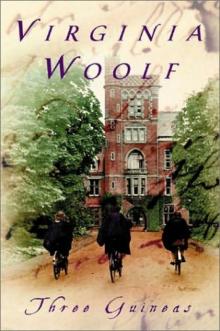 Three Guineas
Three Guineas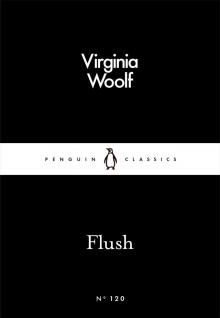 Flush
Flush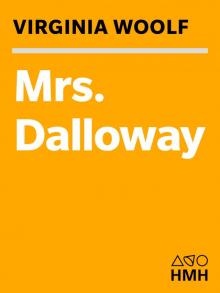 Mrs. Dalloway
Mrs. Dalloway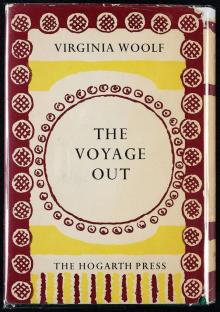 The Voyage Out
The Voyage Out A Writer's Diary: Being Extracts From the Diary of Virginia Woolf
A Writer's Diary: Being Extracts From the Diary of Virginia Woolf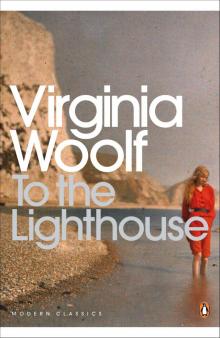 To The Lighthouse
To The Lighthouse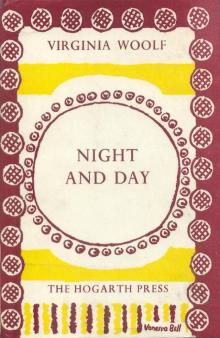 Night and Day
Night and Day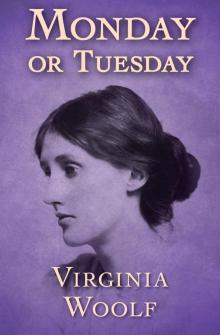 Monday or Tuesday
Monday or Tuesday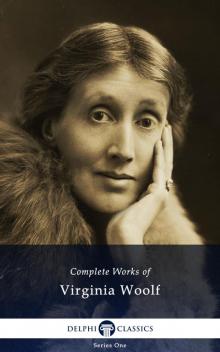 Complete Works of Virginia Woolf
Complete Works of Virginia Woolf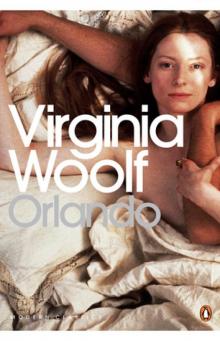 Orlando
Orlando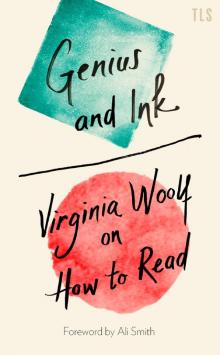 Genius and Ink
Genius and Ink Mrs. Dalloway (Annotated)
Mrs. Dalloway (Annotated)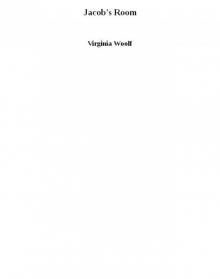 Jacob's Room
Jacob's Room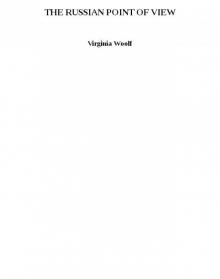 THE RUSSIAN POINT OF VIEW
THE RUSSIAN POINT OF VIEW A Writer's Diary
A Writer's Diary Woolf Short Stories
Woolf Short Stories